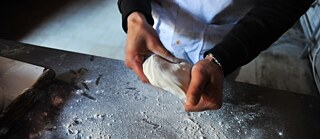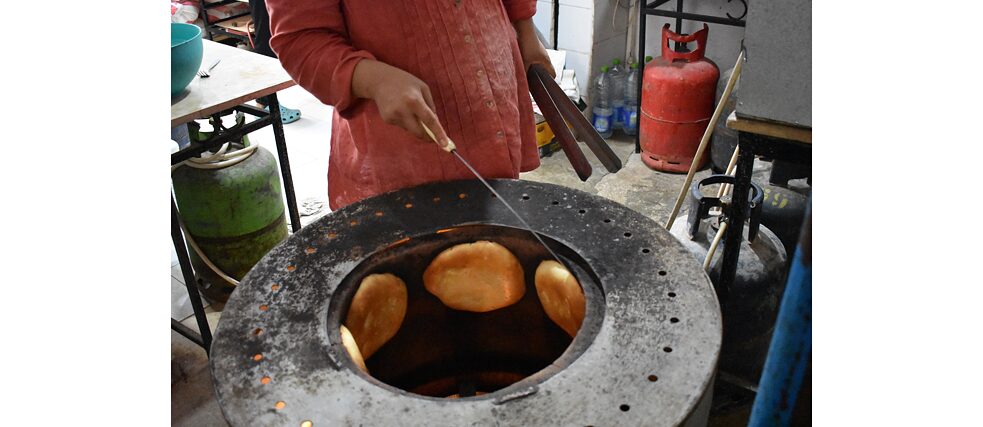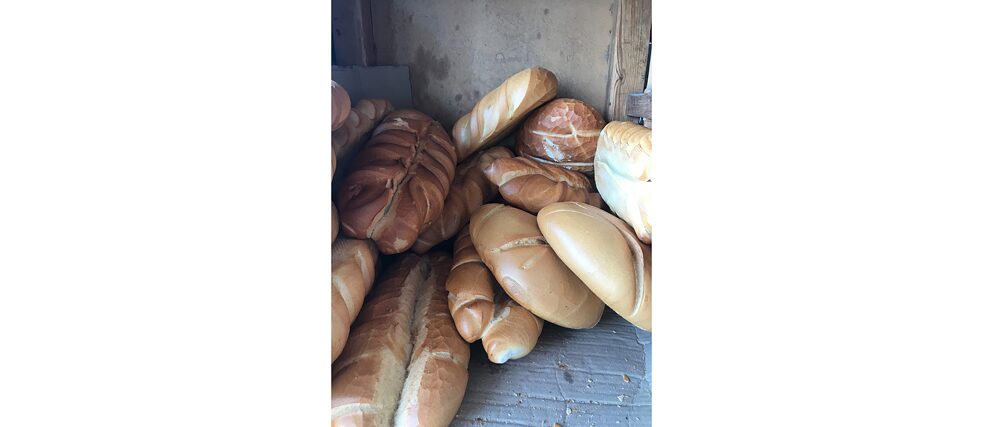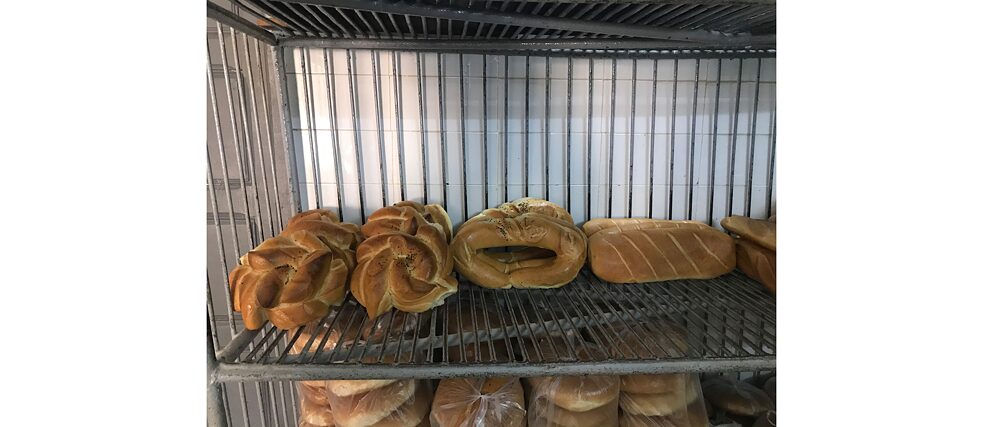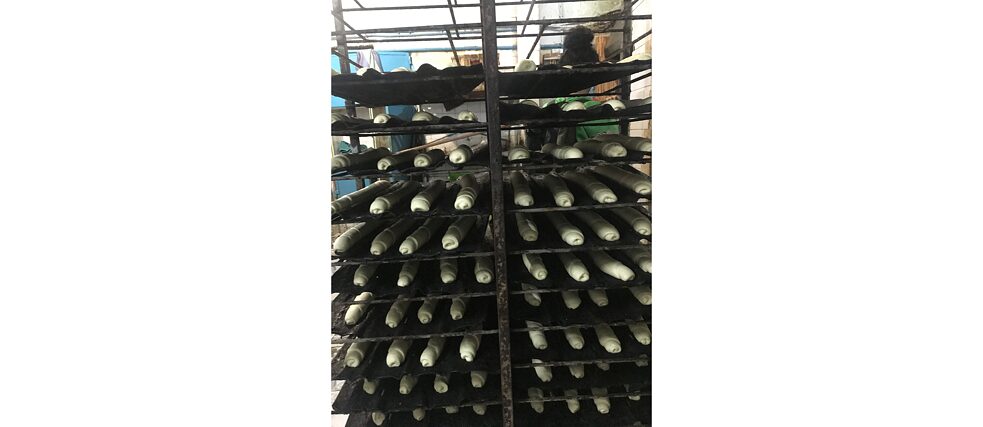Bread is at the heart of a majority of Tunisian dishes and remains a potent cultural, spiritual, and political symbol in the country. Nonetheless, the longevity of this cherished food is at risk. The Tunisian government’s failure to prioritise food sovereignty is pushing the bread industry to the brink, finds Tunisian author Yasmin Houamed.
Under better circumstances, the holy month of Ramadan brings out the beauty of Tunisian bread traditions. Special breads are prepared with fragrant, sweet-smelling seeds and blossom waters and decorated with ornamental accents, such as whole eggs peeking out of twisted braids of dough. In another long held practice, many bakers open their ovens up to people aiming to bake their homemade breads to perfection.In the Ramadan of 2022, however, the crises facing Tunisia’s bread industry are overshadowing - if not making impossible - some of these customs. Long lines to buy bread are forming from the early morning, bakery shelves are emptied of bread by midday, and some grocery stores haven’t had flour or semolina for weeks. The ongoing war in Ukraine - from which Tunisia imports more than 50 per cent of its wheat - plays a big role in these shortages. However, structural, underlying issues have been stymieing the bread industry for decades on end.
A Baker’s Overview of Tunisia’s Bread Industry
If you ask around for a really historic bakery in the suburbs of Tunis, you will be sent to the neighbourhood of Carthage Byrsa. When you arrive, separate streams of yeasty aromas will meet you from two small bakeries conjoined by a white wall: one is set back ten meters or so, while the other marks the periphery of the road. The bakery on the road belongs to an elder man from Zraoua, Matmata, a Tunisian region well known for its baking prowess. From this region, the craft of building traditional ovens like a turtle’s shell was brought to Tunis, long before colonisation brought French-made machines to Tunisian shores.The bakery in the back belongs to Tahar, who has known this space since 1958, when he was six years old. Tahar’s father worked in this bakery from 1944 up until he passed away in Tahar’s high school years. “I would see him heat the oven with wood, empty and clean it, then close the bread in with clay, sealing the door. When the clay baked, he would know that the bread was done,” Tahar explains of their old timing methods.
Other bakers in the surrounding neighbourhoods of Le Kram and La Goulette have similarly romantic tales of bread craftsmanship in the years preceding Tunisia’s independence from France, when Jewish, Italian, and Maltese communities were said to have popularised the modern Tunisian bakery. Before, bread was made at home - with home-grown leaven, of course - and either brought to a local baker - distinguishable by the family’s signature marked into the bread - to be baked for a small fee; or baked in a clay tabouna oven, which is still a widely used method in Tunisia’s interior regions.
Tahar’s bakery’s legal name - The Cooperative of Bakeries in La Goulette, Le Kram, and Carthage - harks back to the post-colonial period when Ahmed Ben Salah mandated that the bread industry, among others, collectivise. “If you had a factory with workers, those workers became your partners, as did your former competitors,” Tahar recalls.
“The Tunisian bakers in France were able to keep their craft alive, which was not the case for bakers in Tunisia,” Tahar laments. Nowadays, he says, the bread industry is reaching rock bottom. “The technique of making bread is just putting stuff on trays: machines work the dough, form the dough, the dough is put into trays, the trays are placed in a fermenting room, and then they are moved to automated, rotating ovens,” he explains.
Habib, a baker for one of the oldest-running bakeries in the downtown neighbourhood of Little Malta, agrees. Now in his fifties, he left the southern region of Medenine at the age of 16 to train as a baker. “The future of bread in Tunisia belongs to machines,” he says. He explains that the work of bakers used to be more tiring, but the taste of bread was much better, noting that he particularly misses the taste of traditional leaven.
A Quick Note on Industrial Yeast
Back in the late 1960s, industrial yeast was made from beet molasses, a byproduct of the Beja region’s sugar production, which was based on sugar beets. Sugar, like flour, is currently a subsidized product, and now all sugar and yeast is imported. Before this transition, leaven was the norm. Many spiritual practices, expressions, as well as the last name Khmira (leaven) hark back to these times and signify the importance of this essential element of healthy bread. “Bread used to weigh a kilo,” Habib concludes, “now it weighs close to nothing.”When Bread Became Synonymous with Dignity
An early sign of the Tunisian government’s unwillingness to prioritise food sovereignty was the decision to take part in the United States’ Food for Peace programme starting in the late 1950s. As journalist Layli Foroudi reports, over the course of nearly three decades, this arrangement saw massive imports of American surplus wheat, which was marketed to children as better than more locally-available, nutritious grains such as barley and sorghum.Postdoc researcher Max Ajl called this move “a propaganda campaign that came from the top down,” that favoured imports over redistributing large swaths of land - some of which were still French-owned - to help the lower classes feed themselves in the years following independence from France. “[The Tunisian government] was very worried about revolution. You can’t just let these people go hungry because hungry people have a propensity to disrupt the social structure,” said Ajl. This effort to stave off social discontent did not last long. The Bread Riots that erupted in 1983 were a clear demonstration of the Tunisian working class’ unwillingness to be robbed of their dignity.
The riots came as a response to President Habib Bourguiba’s decision to double the price of a 700 gram loaf of bread from 80 Millimes to 170 Millimes while facing pressure from the International Monetary Fund (IMF). Bourguiba’s rhetoric surrounding the decision echoed the World Bank’s reasoning in a report from 1982, which stated that reducing bread consumption would be a good way to curb excessive bread wastage in Tunisia. This was far from the reality, as malnutrition in the 1980s was still predominant in Tunisia. Over the course of ten days, protests erupted across the country, and the state pushed back with violent force. The state’s brutal response to the riots left over 100 people dead and over a thousand injured. President Bourguiba reversed his decision, but the damage to his rule was beyond repair.
Following the Bread Riots, bread - particularly the baguette - became an important symbolic tool against political, economic, and social repression. The trend of subsidized bread increasing in price as it decreases in weight has continued. As the baker Habib mentioned, subsidized bread feels empty. At the same time, to compensate for low-quality, imported flour, bakers are relying more and more on bundles of food additives, which are poorly regulated by Tunisian health authorities.
Following the Tunisian Revolution that saw the ousting of president Zine El Abidine Ben Ali in January 2011, there have been major protests that revive the spirit of the first Bread Riots, but nothing has been able to quell the influence of major lending institutions like the IMF and the World Bank, which are eager to target subsidies.
The Tunisian bread industry, as just one element of a broken food supply chain, needs urgent reform. Bypassing the ideal of food sovereignty in Tunisia’s postcolonial development has led the country to a dead end, with farmers, bakers, and consumers suffering alike. Soon there will be no choice but to overhaul many agricultural and food policies and reattempt to develop, this time away from the legacies of colonial exploitation and towards dignity-affirming self-sufficiency.
Related Links
June 2022
